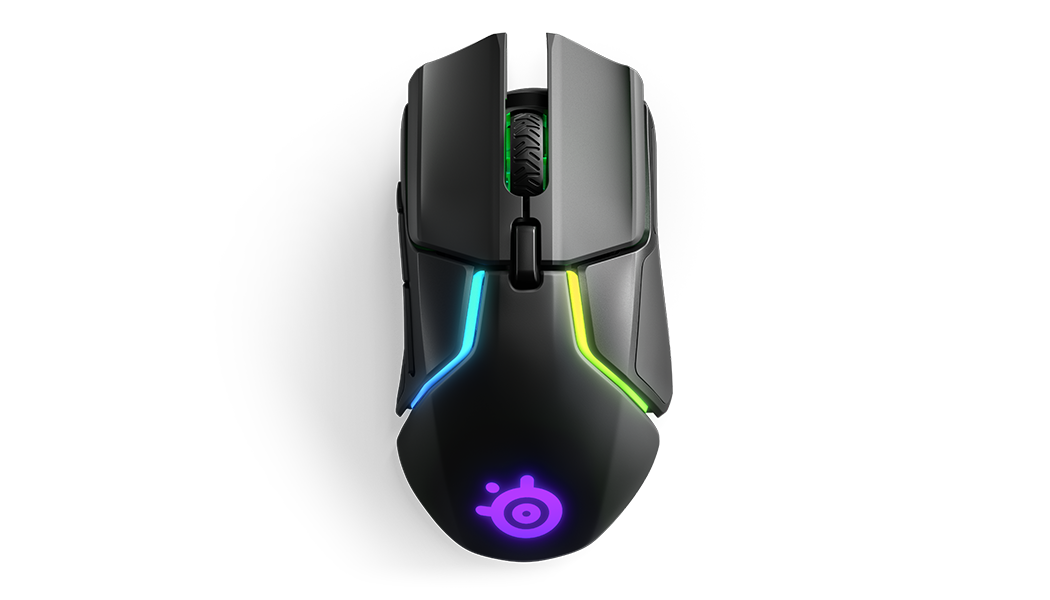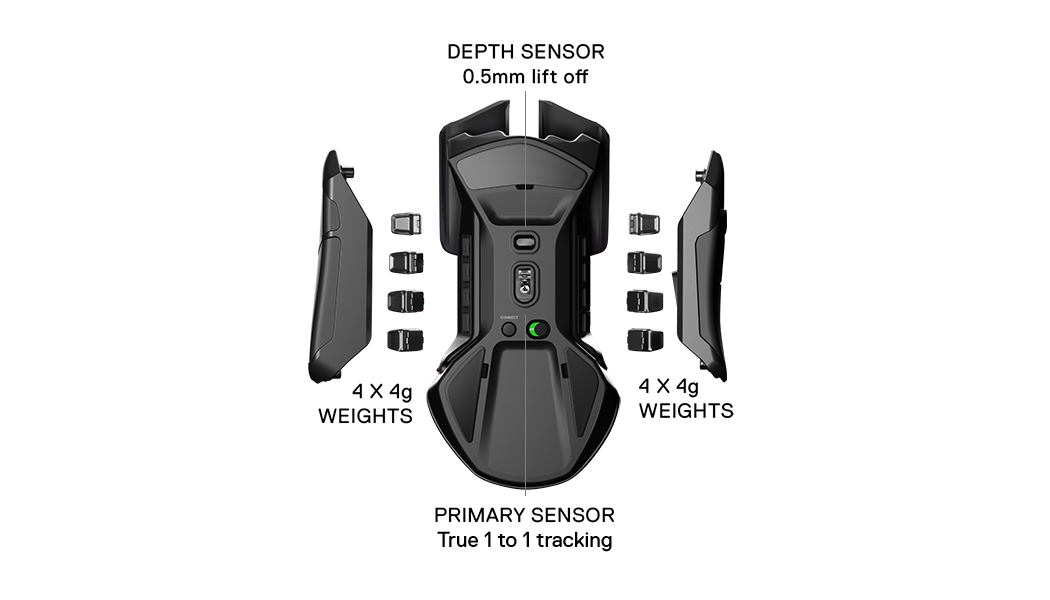SteelSeries Rival 650 Wireless Mouse Said to Charge In 15 Minutes, Last 10 Hours
Many gamers struggle to cut the cord between their PC and their mouse. It's hard to blame them--wireless mice often have unstable connections and cause too much input lag to be trusted. There's also the problem of having the battery die and being unable to play until it's charged. SteelSeries has announced the fast-charging Rival 650 wireless mouse to address those concerns, with the Rival 710 as a backup for those who still want that wire.
SteelSeries Rival 650


The Rival 650 is the first wireless SteelSeries mouse to feature the company's TrueMove3+ dual-sensor system. That system pairs a TrueMove sensor, which the company developed alongside PixArt to offer tracking that "delivers the most natural and accurate mouse movement," alongside an optical sensor used to monitor lift-off distance. The result is a mouse with 1-to-1 tracking from 100 to 12,000 DPI with minimal latency for better aim.
But the sensor's just one aspect of the Rival 650's appeal. The main attraction is SteelSeries' claims regarding the mouse's fast charging abilities. According to the company, five minutes of charging will provide enough power for three hours of use, while 15 minutes will allow for over 10 hours. However, it does warn that fast charging relies on a compatible USB port and that the mouse's RGB lighting profile could affect how quickly its battery runs out.
That's not as promising as Logitech's wireless charging Powerplay mice, which don't have to be plugged in at all, but it's better than most wireless mice. The Rival 650 also doesn't compromise on its wireless connection to preserve its battery life--SteelSeries said it uses a 2.4GHz wireless system with a 1,000Hz polling rate. That compares well to the polling rates of wired mice, although those also don't have to worry about interference.
SteelSeries also outfitted the Rival 650 with adjustable weights. The mouse comes with eight weights that weigh 4g each, with the company saying owners will have 256 different weight combinations to choose from, depending on how many weights they use and where they're placed. Combine that with the previously mentioned RGB lighting, and it seems like the Rival 650 is a true gaming mouse that just happens to be wireless.
It's clear that wired mice aren't going away in the near future--too many people want the guaranteed connectivity afforded by the almighty cord for that to happen. With the inclusion of adjustable weights, an esports-ready sensor, RGB lighting and fast charging capabilities, however, the Rival 650 makes a strong case for gamers to reconsider.
The Rival 650 is available in North America for $120.
Get Tom's Hardware's best news and in-depth reviews, straight to your inbox.
SteelSeries Rival 710
For those who don't trust wireless connections, however, SteelSeries also announced the Rival 710. The mouse is much like its predecessor, the Rival 700, in that it boasts an OLED display, along with tactile alerts that can notify users of in-game events. SteelSeries merely updated the design with a TrueMove3 sensor and 60-million-click durability. The Rival 710 is also customizable via the SteelSeries Engine software, modular cable system and swappable back plate.
The Rival 710 is available in North America $100.

Nathaniel Mott is a freelance news and features writer for Tom's Hardware US, covering breaking news, security, and the silliest aspects of the tech industry.
-
Lucky_SLS Yes! been waiting for the successor to the Rival 700 for a long time!Reply
Nostalgic for us who come from consoles which has tactile feedback in its controllers. -
cryoburner ReplySteelSeries Rival 650 Wireless Mouse Said to Charge In 15 Minutes, Last 10 Hours
Is this supposed to be a "feature", that you need to plug the mouse in to charge for 15 minutes every day? That seems like a lot of bother compared to a wired mouse. The "wireless" functionality certainly isn't offering any convenience benefits here. I suppose one might consider the lack of a wire to help avoid the slight amount of drag a cable might create, but going wireless tends to add weight to the mouse itself, which is generally undesirable for fast-paced games. And even without the weights installed, 121 grams is a little on the heavy side, and I can't imagine adding additional weights to push it up to 153 grams to be beneficial. Configurable weights in mice seem like more of a gimmick than anything, since you normally find them in mice that are relatively heavy to begin with.
And on the topic of weight, the Rival 700/710 is even heavier. Those playing competitive FPS games will tend to ideally want a mouse around 100 grams or less, not counting the cable, while the 710 is 135 grams without its cord. And this is all to add features that are arguably gimmicks, like an OLED display and a rumble motor to provide tactile feedback. The tiny, low-res screen on the side is obviously a mostly-useless gimmick that adds little aside from cost and weight to the product.
The tactile feedback sounds like something that could actually be useful, except that it's apparently still only supported by the same 3 games that supported the feature when the Rival 700 was released nearly 3 years ago. Game developers need to explicitly support GameSense for the feature to be particularly useful, and that seems to still only apply to CS:GO, DOTA2 and Minecraft. Support for GameSense has not been getting added to games, making a potentially cool feature of limited use to anyone who doesn't play a lot of DOTA2 or CS:GO. It's supposed to be possible to rig together cooldown timers that rumble a certain number of seconds after pressing a button in other games, but it requires swapping profiles when changing between characters with different abilities, and keeping track of changes to the games and updating the timers accordingly, making it a rather janky solution. For something like GameSense to be really useful, it would likely need to be an open standard supported by multiple hardware manufacturers, to increase the number of people who can make use of the feature.
I have a Rival 300, and its a decent-enough mouse, but these models seems to be adding features of questionable usefulness just to push their prices into the $100+ range with little actual benefit.
